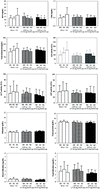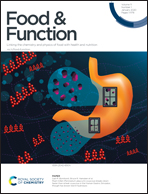Consumption of a green tea extract–curcumin drink decreases blood urea nitrogen and redox iron in β-thalassemia patients†
Abstract
The most important cause of death in β-thalassemia major patients is organ dysfunction due to iron deposits. Non-transferrin bound iron (NTBI), labile plasma iron (LPI) and labile iron pool are redox-active forms of iron found in thalassemia. Iron chelation therapy is adopted to counteract the resulting iron overload. Extracts of green tea (GTE) and curcumin exhibit iron-chelating and antioxidant activities in iron-loaded cells and β-thalassemic mice. We have used our GTE-CUR drink to investigate the potential amelioration of iron overload and oxidative stress in transfusion-dependent β-thalassemia (TDT) patients. The patients were enrolled for a control group without and with GTE-CUR treatments (17.3 and 35.5 mg EGCG equivalent). Along with regular chelation therapy, they were daily administered the drink for 60 d. Blood samples were collected at the beginning of the study and after 30 d and 60 d for biochemical and hematological tests. Interestingly, we found a decrease of blood urea nitrogen levels (P < 0.05), along with a tendency for a decrease of NTBI and LPI, and a delay in increasing lipid-peroxidation product levels in the GTE-CUR groups. The findings suggest that GTE-CUR could increase kidney function and diminish redox-active iron in iron overloaded β-thalassemia patients.



 Please wait while we load your content...
Please wait while we load your content...